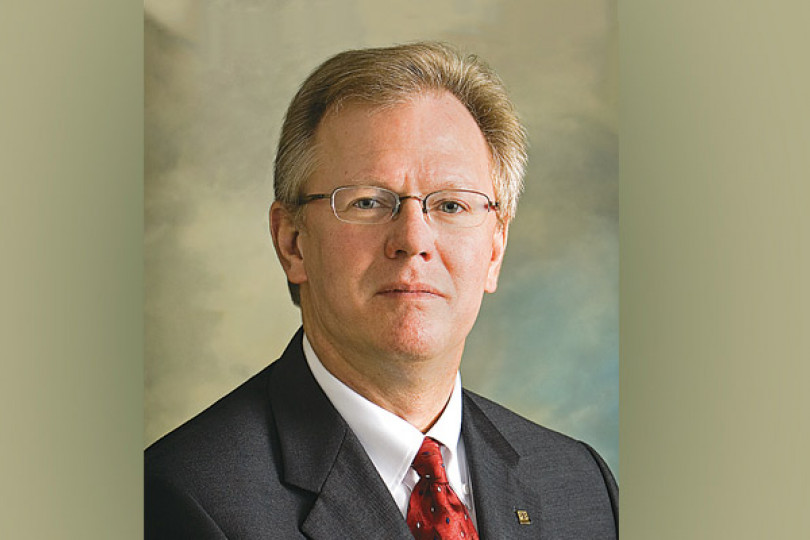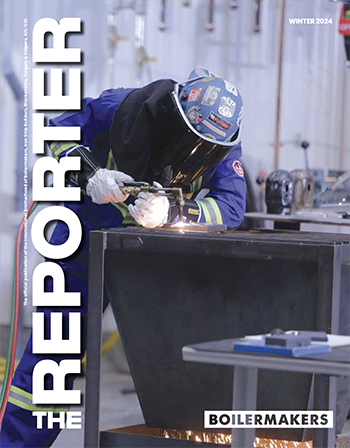Each day of delay in fully implementing 45Q tax credits is a day lost in the critical work of advancing CCUS technologies, reducing carbon dioxide emissions and retaining or creating well-paying jobs.
Surge in carbon capture projects awaits full guidance on 45Q
WITH THE UNITED States poised to lead a global push for carbon capture, use and storage, investors and developers in the U.S. are anxiously awaiting the full release of guidelines from the IRS on expanded tax credits for CCUS projects.
It has been more than two years since Congress, in passing the FUTURE Act, extended and expanded credits under Section 45Q of the federal tax code. These credits have the potential to attract investments, promote research and development, and stimulate CCUS projects aimed at slashing carbon emissions across energy and industrial sectors.
Unfortunately, the IRS (under the Department of the Treasury) has moved far too slowly to provide the necessary guidance. The agency finally issued two rules this past February – concerning construction deadlines and investment partnerships – but other guidance has yet to be released.
Until the IRS completes its work on 45Q guidance, investors and developers are reluctant to move forward. Billions of investment dollars are being held up by the delay, and progress on carbon dioxide emission reductions is being slowed.
Last summer, the Boilermakers, as part of the Carbon Capture Coalition, joined with more than 60 companies, unions, environmental, energy and agricultural organizations in submitting letters to the U.S. Senate and House urging Congress to press the Treasury for swifter action.
The Boilermakers and other stakeholders have continued to voice our concerns about the detrimental impact of delayed implementation, while also submitting positive policy suggestions to improve and accelerate the process. We were pleased to see some of the coalition’s suggestions adopted by the IRS in the rules released to date.
However, IRS must complete its full guidelines – and soon – so that investors and developers can begin construction of CCUS projects by the end of 2023, the deadline established under the FUTURE Act.
Further delay will only undermine the opportunity for the United States to lead global deployment of essential CCUS technologies.
FUTURE Act offers path to broader CCUS adoption
GENEROUS TAX CREDITS helped lead to widespread adoption of wind and solar technologies in the United States. Those incentives helped decrease wind and solar costs and improve their efficiencies. In the same way, incentives under the FUTURE Act can spur the advancement of CCUS technologies to capture emissions from energy and industrial sectors and permanently store carbon dioxide safely underground or use it in commercial products.
Key provisions of the FUTURE Act include:
- Raising existing tax credits, from $20 per metric ton to $50 per metric ton, for capturing and permanently storing carbon dioxide in geologic formations.
- Raising existing tax credits from $10 per metric ton to $35 per metric ton for capturing and storing CO2 used for enhanced oil recovery (also known as EOR).
- Expanding qualified projects to include technologies that create products from CO2, such as cement blocks, chemicals, plastics and fuels (same tax credit as EOR).
- Expanding qualifying projects to include direct air capture of CO2.
- Extending the construction window for carbon capture projects from five years to seven.
- Extending the term that tax credits can be claimed (from 10 years to 12 years) and removing the program cap for eligible projects.
These changes offer developers and investors more certainty that federal support will be available to them as they test, prove and scale technologies for commercial use. And they offer hope that America’s abundant natural resources – and the jobs and industries dependent upon them – can remain in our energy mix for some time to come as the world shifts to low-carbon economies with the goal of net zero emissions by mid-century.
CCUS is receiving wider acceptance
AS GLOBAL CLIMATE organizations, nations and sub-national governments seek solutions to climate change with an eye toward reaching net zero emissions by mid-century, CCUS is increasingly regarded as an essential part of those solutions.
The International Panel for Climate Change, for example, included CCUS in three out of four of its pathways to achieve the Paris global warming target of 1.5 degrees Centigrade in its 2018 Global Warming of 1.5C Report.
The International Energy Agency, in its 2019 technology report, recommended that government policies should “support the development and deployment of carbon capture, utilization and storage (CCUS) in industry as part of a least-cost portfolio of technologies needed to achieve climate and energy goals.” Indeed, the IEA has stated that achieving net zero emissions would be more than twice as costly without CCUS.
A 2019 report by the UK’s Committee on Climate Change stated that for the United Kingdom to meet its climate goals, “[Carbon capture] is a necessity, not an option.”
And in early 2019, California, the largest consumer of gasoline and jet fuel in the United States, recognized the importance of carbon capture and storage by including a carbon capture protocol in its low carbon fuel standard credit-based trading system. Earlier this year, the credits rose to nearly $220 per ton, a substantial incentive for lowering emissions.
The growing acceptance of CCUS as part of a portfolio of low carbon solutions can only be strengthened by the full implementation of 45Q tax credits and the resulting boost to CCUS technology development and deployment.
World needs 2,000 CCUS facilities
REALIZING THE PROMISE of CCUS as a tool to lower carbon emissions globally will require much higher levels of investment and R&D. According to the IEA, 2,000 large-scale CCUS facilities will need to be operational by 2040 to meet Paris climate agreement goals.
Today, there are but 19 such facilities in operation, four under construction and 28 in development, according to the Global Carbon Capture Institute. Getting to 2,000 will mean a 100-fold increase.
In its 2019 Global Status Report, the GCCI noted that most of the world’s large-scale carbon capture facilities are located in North America.
Canada has been an early leader in advancing CCUS technologies with Boilermaker-involved projects including Shell Quest, SaskPower Boundary Dam and Red Water Sturgeon Refinery. Those projects have proven that carbon capture technologies can be scaled up to commercial applications involving oil refining and coal-fired power generation.
Meanwhile, a joint study by the International CCS Knowledge Centre and Lehigh Cement will examine the feasibility of full-scale CCS for a cement facility in Alberta (where Local D359 Boilermakers are employed), the first such study in North America.
According to the GCCI report, the United States is now at the forefront of advancing CCUS and “looks set to continue in first place,” with strong federal policy support. However, much depends on the IRS ending its delay of tax credit guidance. The report observed: “Although seen as the world’s most progressive [carbon capture]-specific incentive,
Section 45Q is yet to be formally implemented, creating ambiguity about which projects are eligible.”
Each day of delay in fully implementing 45Q tax credits is a day lost in the critical work of advancing CCUS technologies, reducing carbon dioxide emissions and retaining or creating well-paying jobs.
The IRS must move more quickly to provide a complete set of rules for investors and developers.






